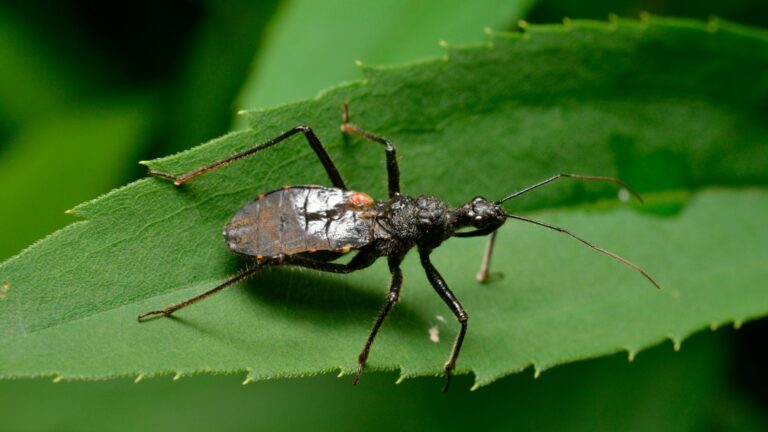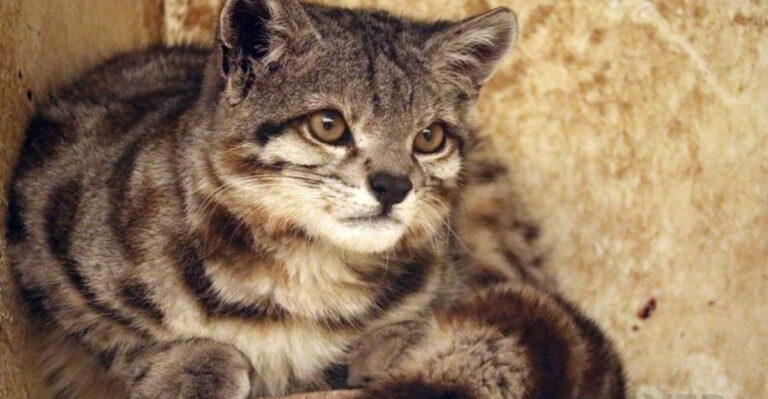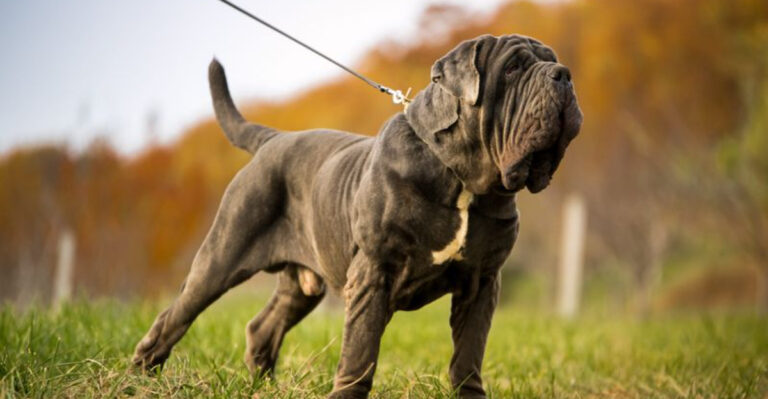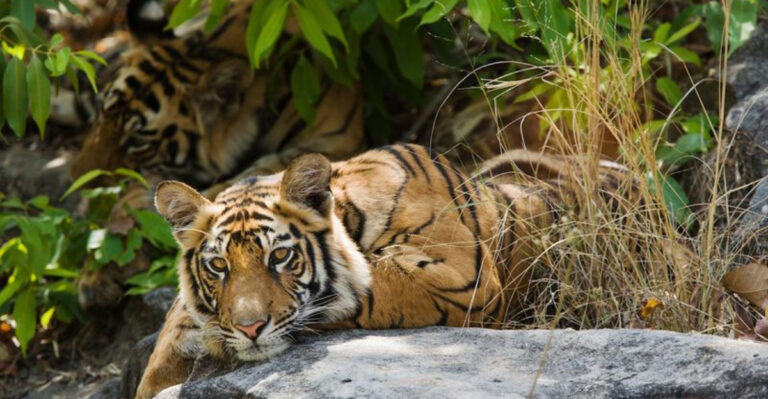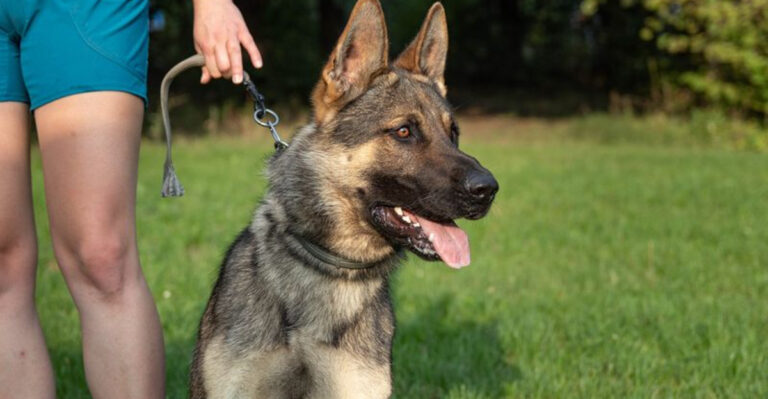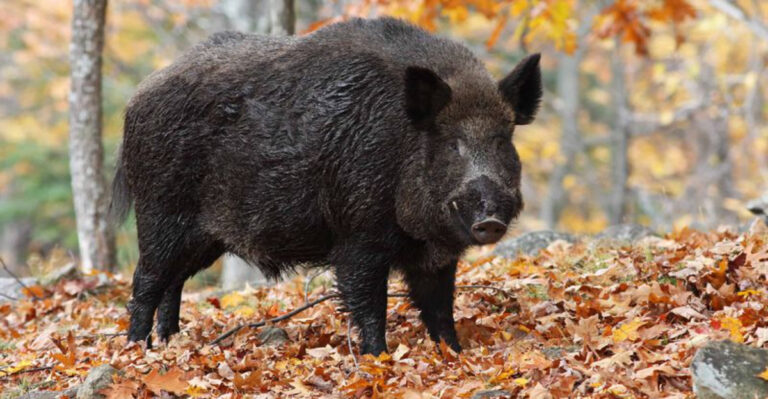12 Differences Between Bengal Cat Vs Egyptian Mau
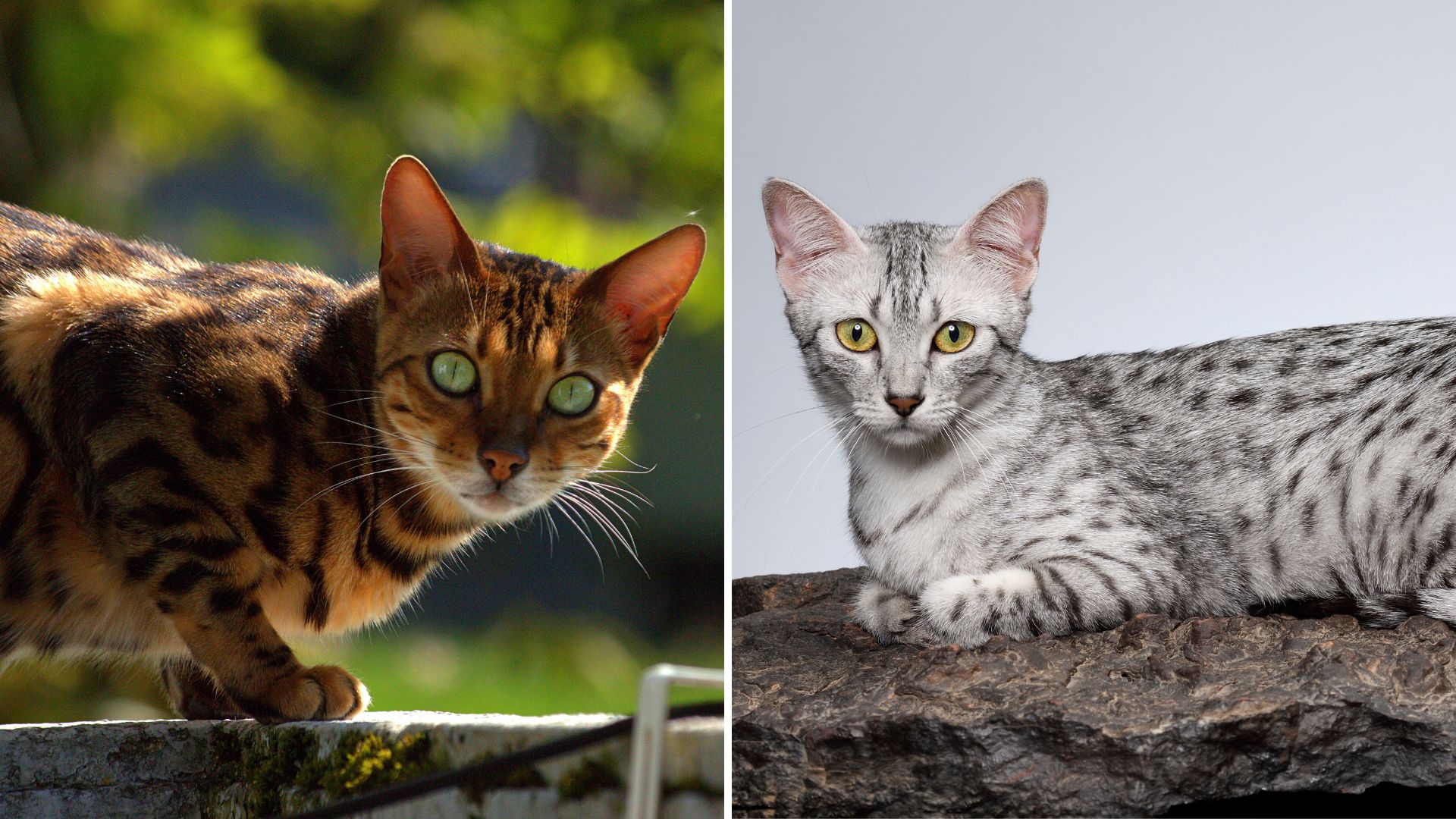
The Bengal Cat and Egyptian Mau are two fascinating breeds, each with its distinctive traits and appeal. While both are adored by cat enthusiasts, they offer different experiences to their owners.
Whether you’re drawn to a Bengal’s wild aesthetic or the Egyptian Mau’s ancient allure, understanding the differences can help you choose the perfect feline companion.
1. Origin And History
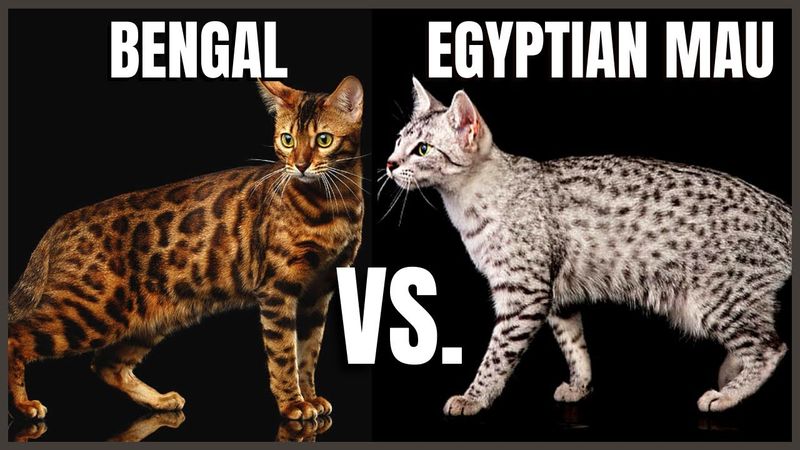
Bengal Cats are a relatively modern breed, created by crossing domestic cats with the Asian leopard cat. This breeding program began in the 1960s in the United States. In contrast, the Egyptian Mau boasts an ancient lineage, with roots tracing back to the cats revered in pharaonic Egypt.
These cats were often depicted in Egyptian art, symbolizing grace and divinity. While Bengals reflect a conscious effort to blend domestic and wild traits, Maus have naturally evolved.
2. Coat And Patterns
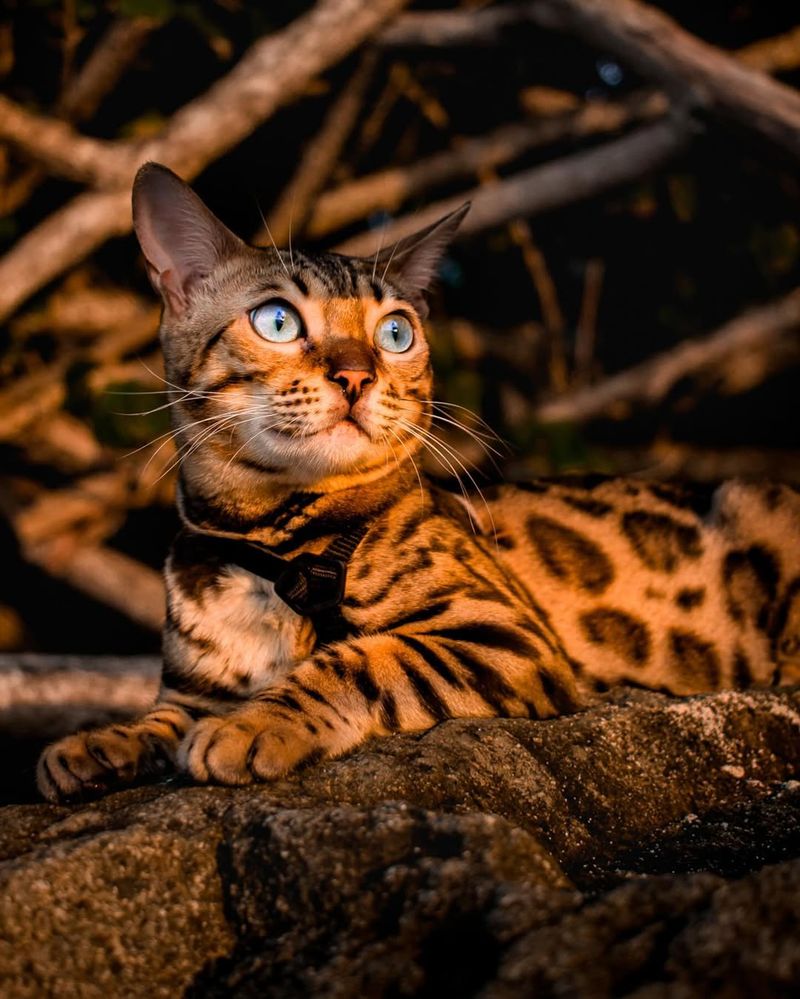
The Bengal Cat’s coat is truly striking, featuring rosettes, spots, and sometimes even marbling resembling a wild leopard. This gives them an exotic appearance that many find irresistible. Egyptian Maus, on the other hand, are the only domesticated cats with naturally occurring spotted coats.
Their spots are smaller and more evenly distributed than those of the Bengal. Both breeds have sleek, shiny coats that require regular grooming. However, the patterns and textures set them apart, making each breed visually unique and enchanting in its own way.
3. Temperament And Personality
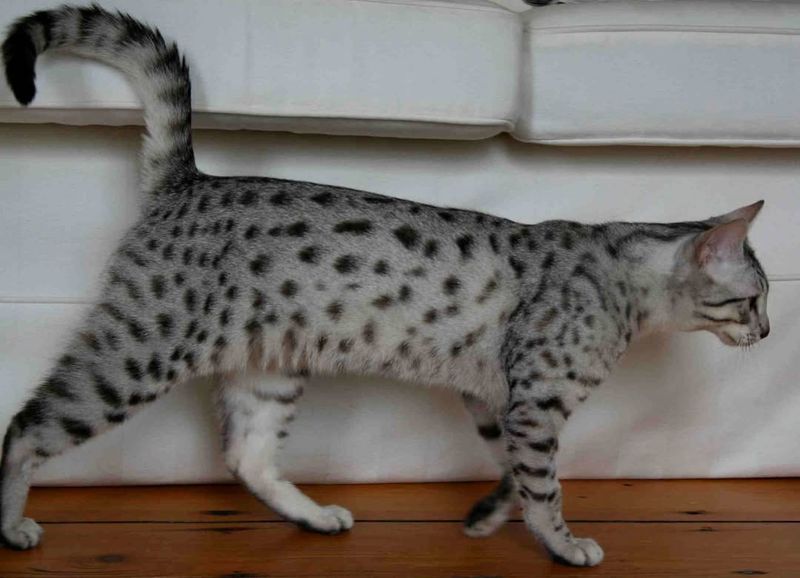
Bengal Cats are known for their high energy levels and curious nature, often seeking out adventure and playtime. They thrive in active environments where they can explore and engage. Egyptian Maus, conversely, display a more reserved demeanor.
They are affectionate yet cautious, preferring quiet companionship over constant activity. These differences in personality make each breed suitable for different types of owners. While Bengals might appeal to those wanting an active pet, Maus are perfect for someone seeking a loyal, calming presence.
4. Vocalizations
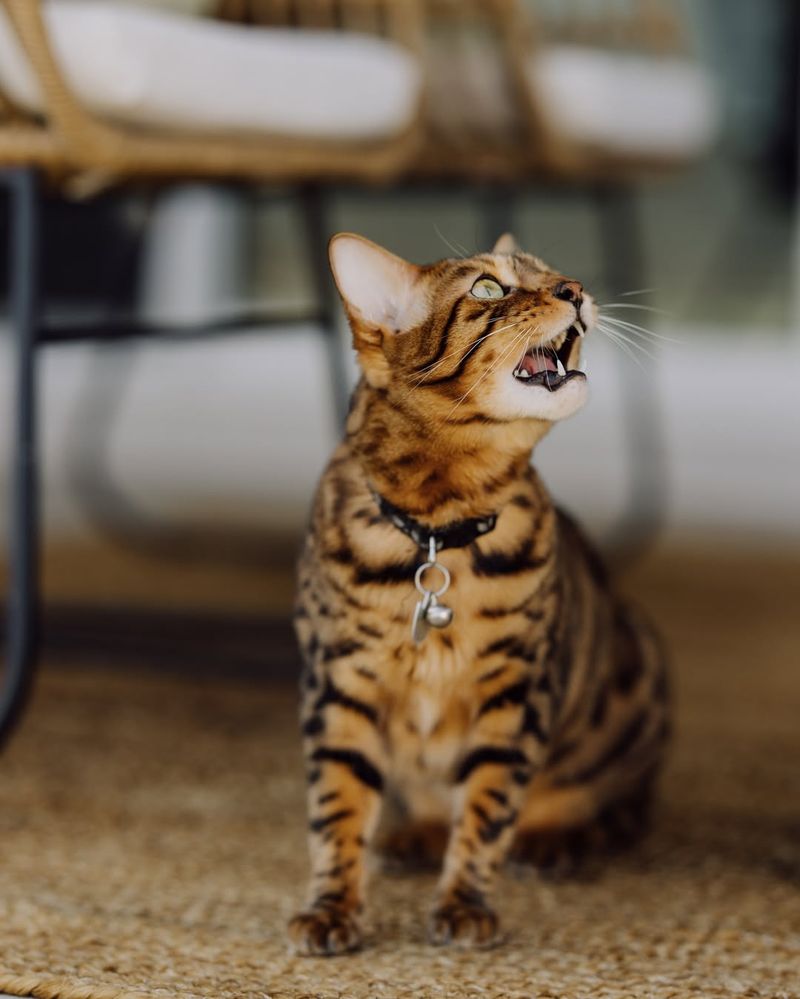
Bengal Cats are vocal creatures, often communicating with a range of sounds from chirps to yowls. They love to express their opinions and engage with their human companions. Egyptian Maus are comparatively quieter, known for their soft, melodic voices.
Maus communicate more through body language and gentle purring. This variation in vocalization is essential for potential cat owners to consider, as noise levels can impact household harmony. Those who prefer a more tranquil environment might lean towards the Egyptian Mau over the talkative Bengal.
5. Activity Level
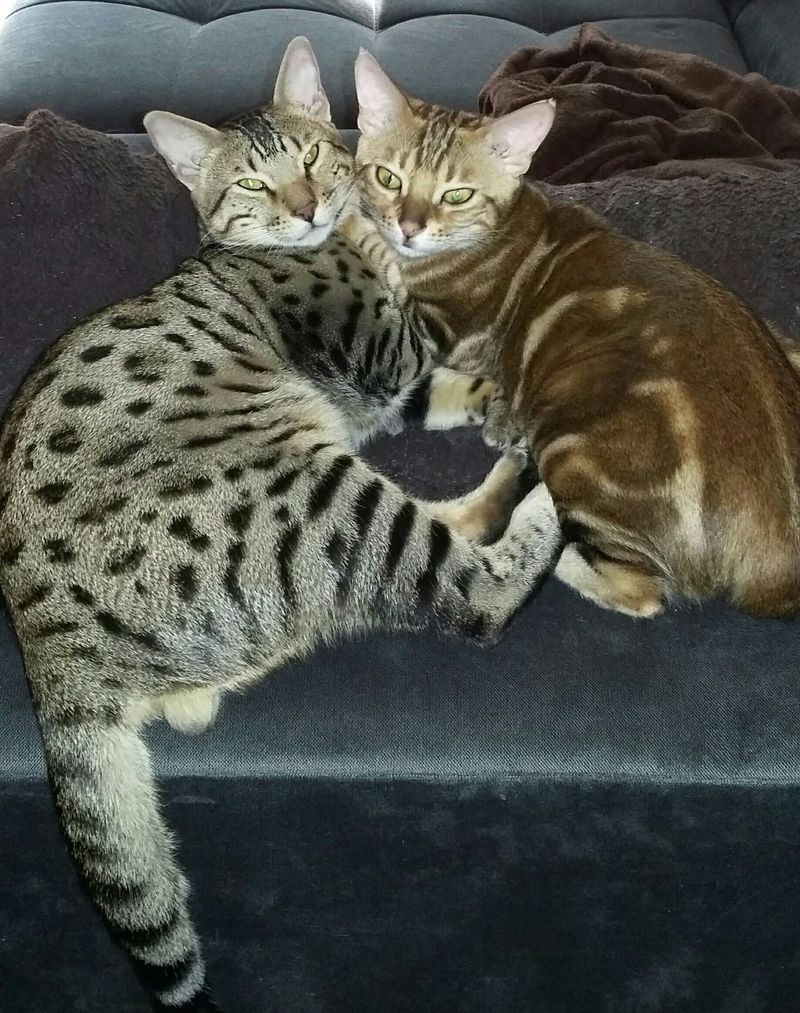
With energy levels that seem boundless, Bengal Cats are natural athletes. They need plenty of physical activity and mental stimulation to stay happy and healthy. Their love for climbing and exploring can transform a home into their personal playground.
On the other hand, Egyptian Maus are moderately active, enjoying playtime but also valuing their rest. They appreciate interactive toys but are equally content lounging by a sunny window.
6. Social Interaction
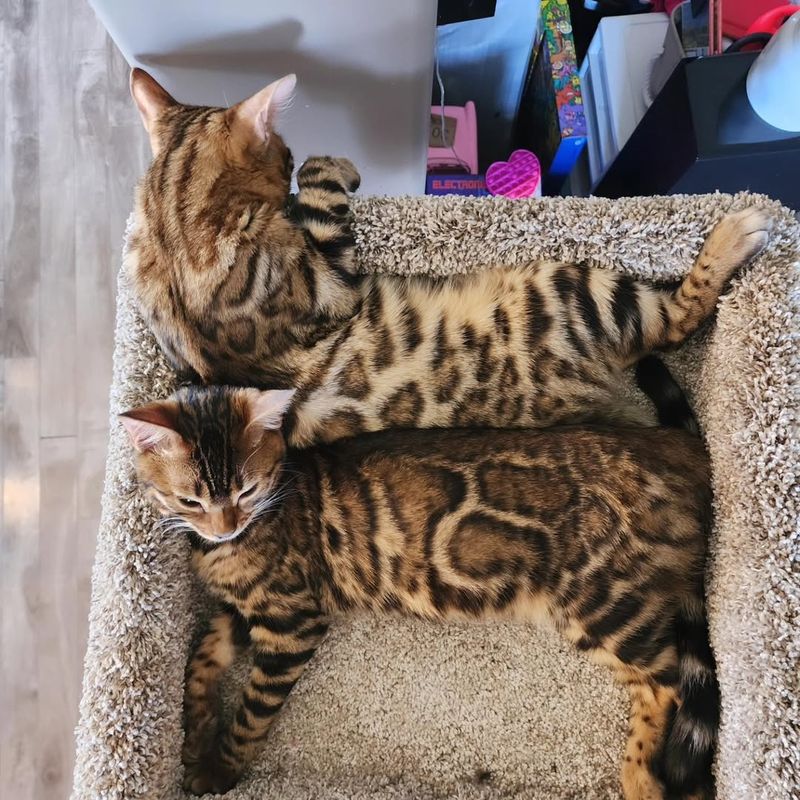
Bengals are social butterflies, often enjoying the company of both humans and other pets. Their outgoing nature makes them excellent companions in family settings. Egyptian Maus, while friendly, tend to bond closely with a select few people.
They may take time to warm up to strangers but are deeply loyal once trust is established. Such social traits should be considered when selecting a breed, as they affect how the cat might integrate into a household. Both can be loving pets, but their approaches to socialization differ.
7. Intelligence And Training
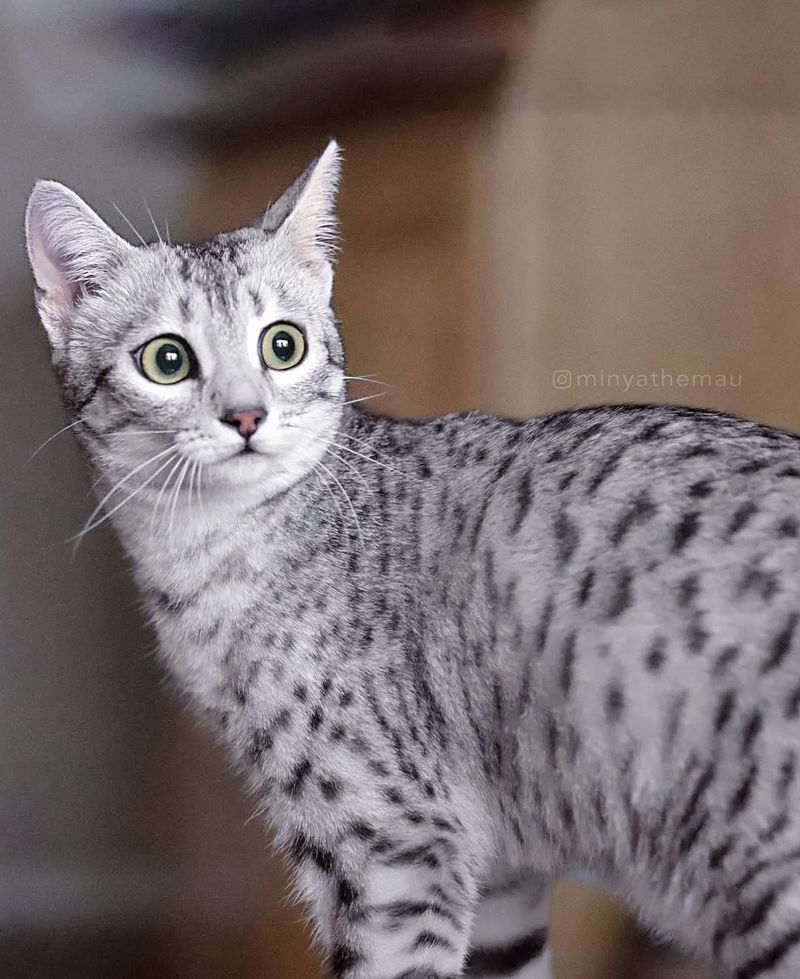
Bengal Cats are highly intelligent and able to learn tricks and commands with ease. Their problem-solving skills are remarkable, making interactive toys a favorite. Egyptian Maus are also intelligent but might not be as eager to learn tricks.
They prefer to observe and understand their environment carefully. Both breeds benefit from mental stimulation, but Bengals may demand more variety in their activities.
8. Grooming Needs
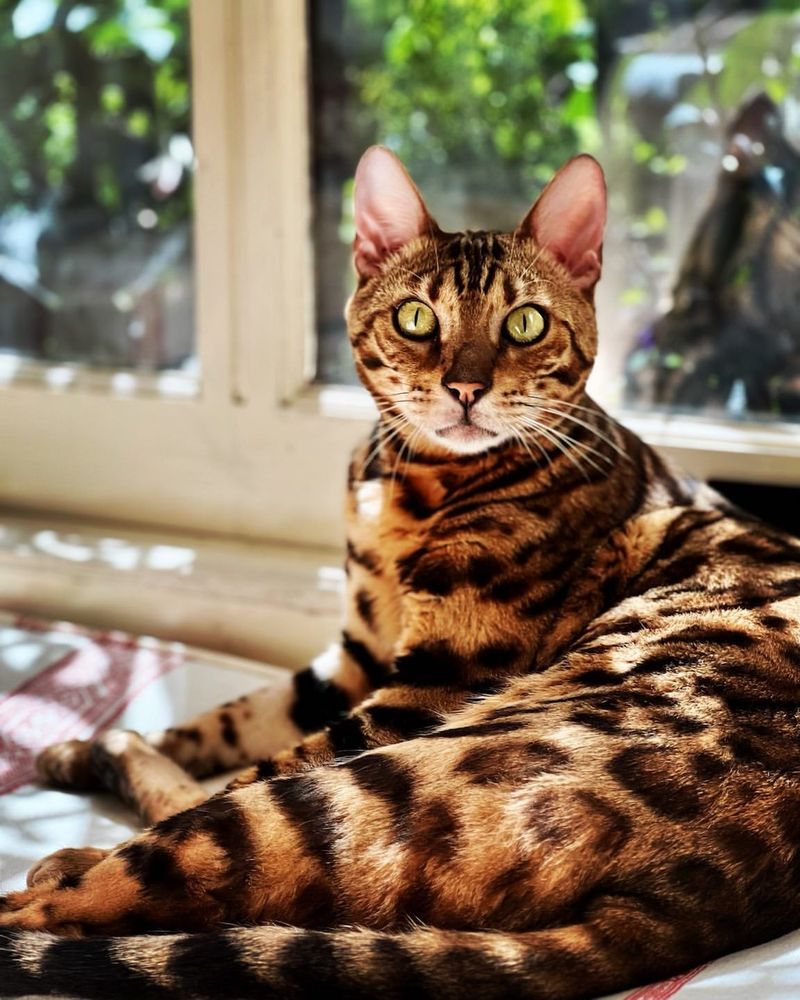
Bengal Cats have short, dense coats that require regular brushing to maintain their healthy sheen and reduce shedding. Their grooming needs are relatively straightforward but essential for skin and coat health.
Egyptian Maus also have short coats but are meticulous self-groomers, often needing less frequent brushing than Bengals.
While both breeds enjoy grooming sessions as a bonding experience, the Mau’s natural grooming habits can be more self-sufficient.
9. Health Considerations
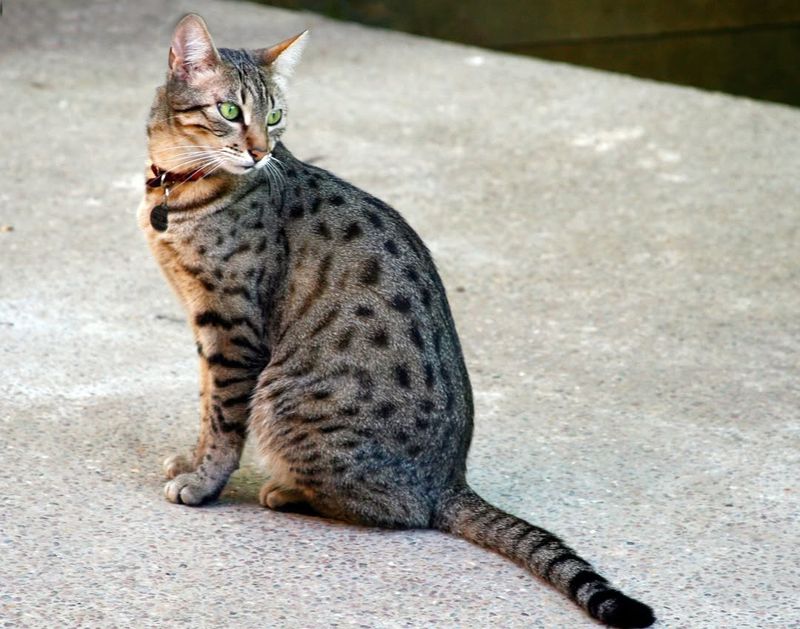
Bengal Cats are generally healthy but can be prone to heart diseases like hypertrophic cardiomyopathy. Regular veterinary check-ups are vital to monitor their health status.
Egyptian Maus also have a robust health profile, though they may face genetic predispositions to conditions like pyruvate kinase deficiency.
Both breeds benefit from a balanced diet and routine vet visits, ensuring they lead long, healthy lives despite their specific health concerns.
10. Price And Availability
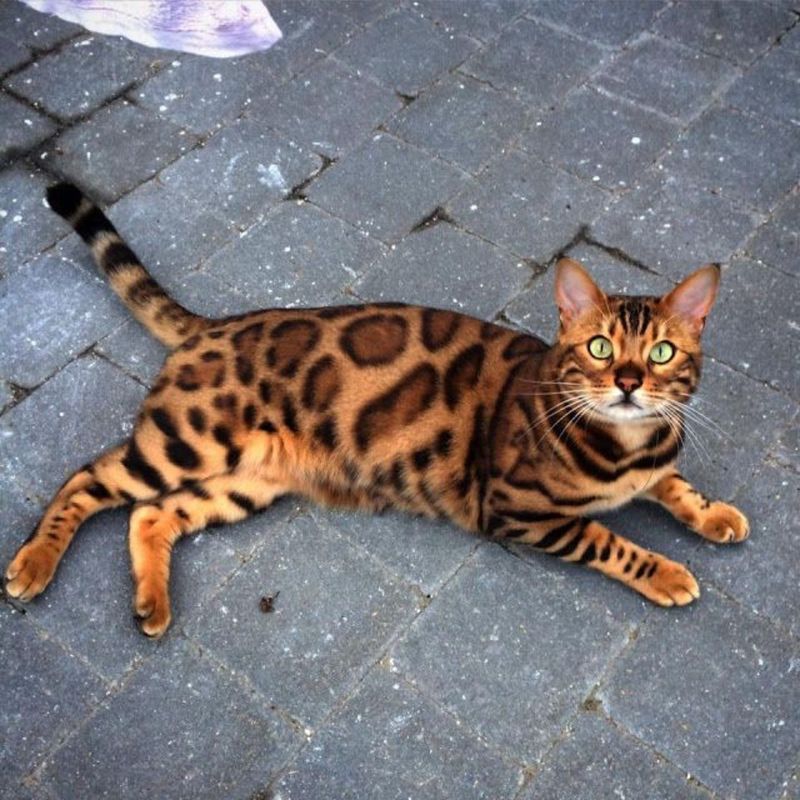
Bengal Cats are often more widely available, with a higher price tag reflecting their exotic appearance and breeding background. They can range from several hundred to thousands of dollars. Egyptian Maus, while less common, may also command a high price due to their rarity and historical significance.
11. Lifespan
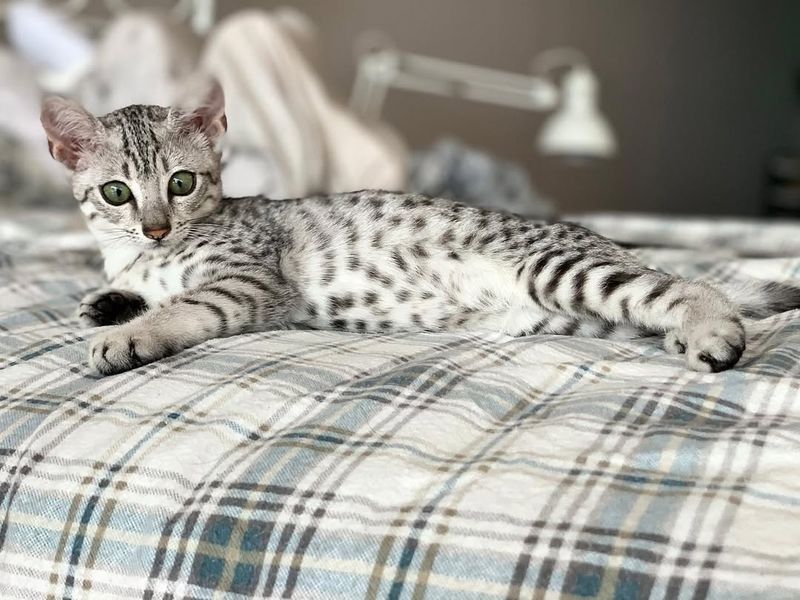
Both Bengal Cats and Egyptian Maus enjoy relatively long lifespans when healthy, often living into their late teens. Bengals typically live between 12 to 16 years, while Maus can live up to 14 to 18 years. Their longevity is influenced by factors like diet, exercise, and regular veterinary care.
Potential owners should consider the long-term commitment involved in caring for either breed, ensuring they are prepared to provide the necessary care and attention over many years.
12. Unique Characteristics
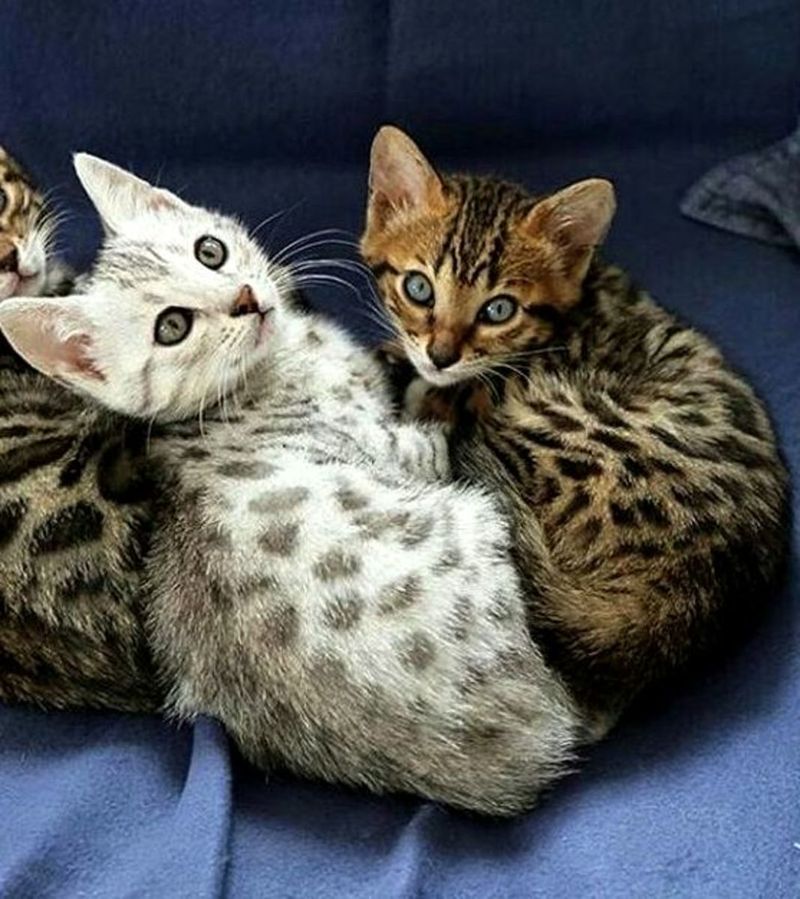
One of the most unique features of Bengal Cats is their shimmering or glittering coat, which seems to sparkle in the light. This trait adds to their exotic allure. Egyptian Maus are renowned for their captivating gooseberry green eyes, a defining characteristic that sets them apart.
These unique physical traits contribute to their breed standards and appeal. Both breeds offer distinctive features that attract admirers and potential owners alike.

